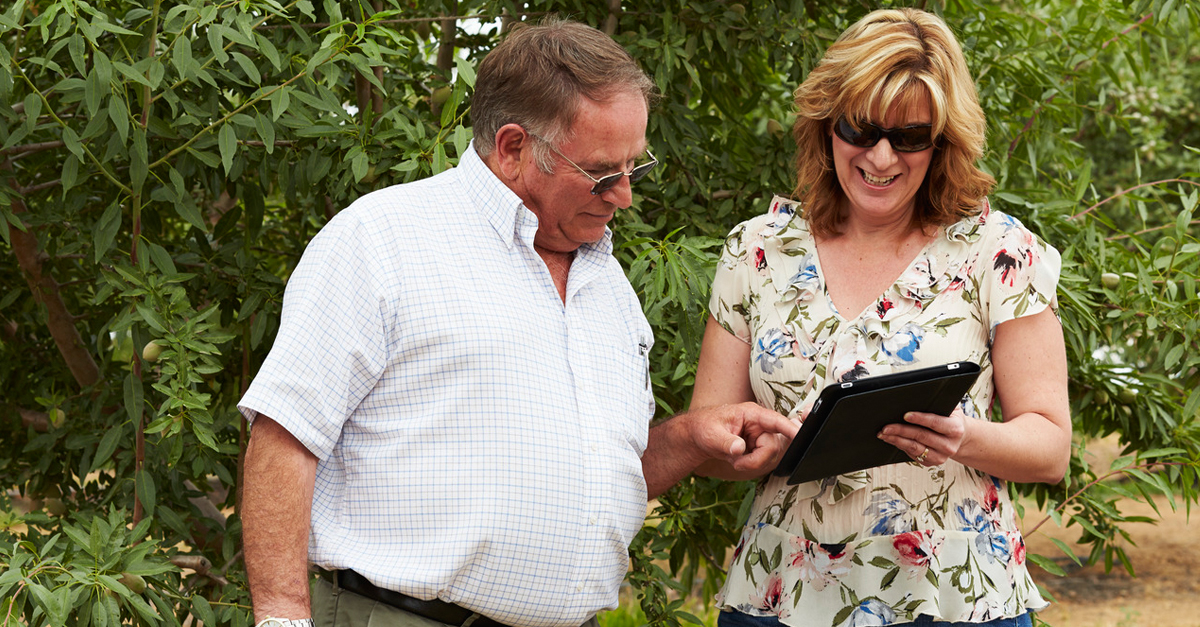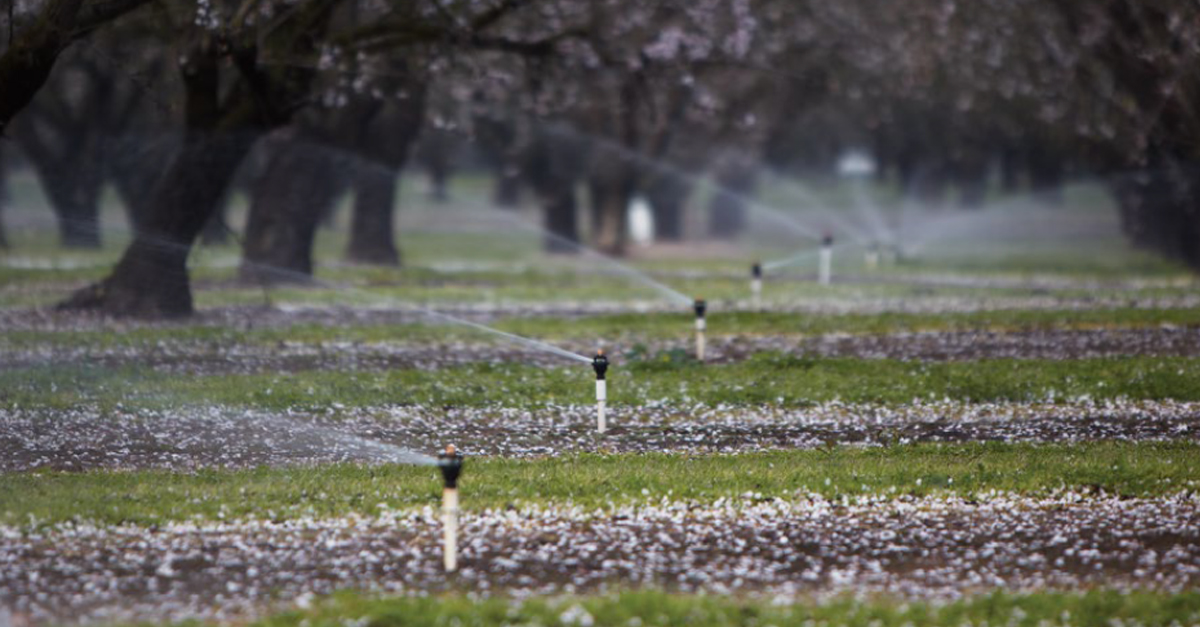California Almond industry members lead California agriculture in improving water use efficiency.1 Nearly 80% of California Almond orchards use microirrigation and 87% of almond growers use demand-based irrigation scheduling.2 Adoption of advanced irrigation management practices like these helps growers get more out of their orchards while maximizing efficiency.
 Innovations in irrigation practices stem from research investments. The California Almond industry, through Almond Board of California (ABC), has invested nearly $70 million over more than 40 years to build a foundation of research on improving how almonds are grown, processed and consumed. The foundation includes 201 different water research projects spanning irrigation efficiency, groundwater recharge and water quality. Through production improvements and adoption of water efficient technologies, this investment has helped the industry reduce the amount of water needed to grow a pound of almonds by 33% over the past 20 years.3
Innovations in irrigation practices stem from research investments. The California Almond industry, through Almond Board of California (ABC), has invested nearly $70 million over more than 40 years to build a foundation of research on improving how almonds are grown, processed and consumed. The foundation includes 201 different water research projects spanning irrigation efficiency, groundwater recharge and water quality. Through production improvements and adoption of water efficient technologies, this investment has helped the industry reduce the amount of water needed to grow a pound of almonds by 33% over the past 20 years.3
A roadmap to continued improvement
While the industry has made strides in irrigation efficiency, there’s more everyone can do, which is why the Almond Board and almond irrigation experts developed the Almond Irrigation Improvement Continuum in 2017. The Continuum provides a path to improvement for every almond grower across varying stages of irrigation precision using five key management areas:
- Calculating Orchard Water Requirements
- Monitoring Irrigation System Performance
- Measuring Applied Water
- Monitoring Soil Moisture
- Monitoring Plant Water Status
Recognizing that growers may be operating at different stages of irrigation efficiency, the Continuum provides information at three proficiency levels (1.0, 2.0 and 3.0).
The Almond Board’s goal is to assist the industry in meeting level 1.0. These are irrigation management practices that are within reach for all California Almond growers and can be implemented with limited additional investment in time and/or financial resources. Levels 2.0 and 3.0 refine irrigation management with the employment of additional investments and more advanced practices.
Leading this initiative is Spencer Cooper, senior manager, Irrigation and Water Efficiency for ABC. He provides system-specific recommendations to attain even more ’crop per drop’ on an orchard-by-orchard basis.
Understanding the nuances of each orchard’s conditions is crucial in Cooper’s work but will also benefit industry members when reviewing their operations independently. To help, the California Almond Sustainability Program (CASP) offers a variety of tools to facilitate improvement in the orchard and beyond.4
Nearly a quarter of California’s productive almond acreage has been assessed to date through CASP. The data gathered through self-assessments provides statistically significant information about the use of distinct management techniques and practices across the growing region. Participation in CASP gives credit where credit is due, and helps the Almond Board tell the industry’s story to consumers, buyers and food companies to help our target audiences understand the practices used to put almonds on their table.
Prospects in the orchard
In addition to fueling irrigation improvements, the Almond Board’s research investments are forging a path towards future innovations. A more notable prospect is already taking place in almond orchards: groundwater recharge.
Groundwater is a vital resource in California, held in underground aquifers that are collectively California’s largest water storage system. In addition to surface water, which is moved around the state via rivers, aqueducts, reservoirs and canals, groundwater plays an important role in growing food and providing drinking water for Californians.
ABC-led research efforts dating back to 2015 are exploring to what extent almond orchards may be used to replenish underground aquifers. The research involves multiple on-farm trials, where sites are being flooded with excess winter stormwater to determine how recharge may affect orchard health, water quality and other factors. The findings from these studies will help develop best practices for some growers to participate in on-farm recharge and promote groundwater sustainability.
Across the industry, research continues to advance what’s possible in managing and maximizing almond water use. To learn more about current practices and those on the horizon, visit Almonds.com/Irrigation and sign up for the sustainability program at SustainableAlmondGrowing.org.
[1] California Department of Water Resources. California Water Plan Update 2013: Volume 3, Chapter 2.
[2] California Almond Sustainability Program. August 2017.
[3] University of California, 2010. Food and Agriculture Organization of the United Nations, 2012. Almond Board of California, 1990 –94, 2000 –14.
[4] Sustainable almond farming utilizes production practices that are economically viable and based upon scientific research, common sense and a respect for the environment, neighbors and employees. The result is a plentiful, healthy and safe food product.


